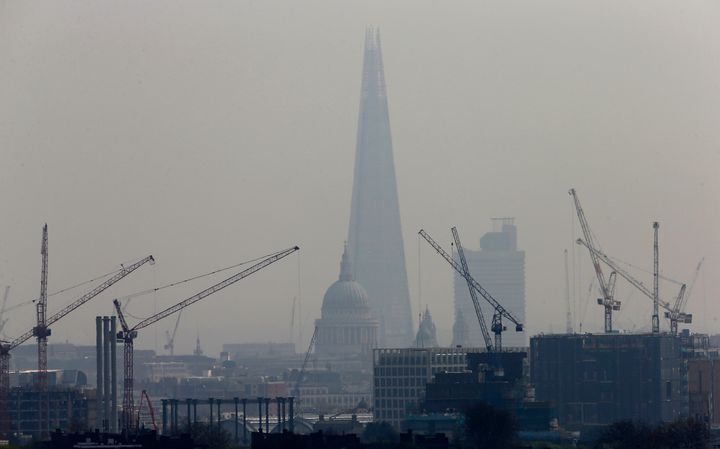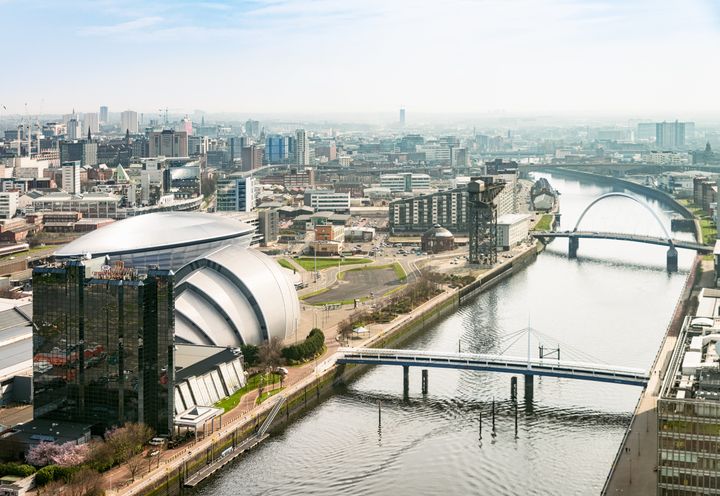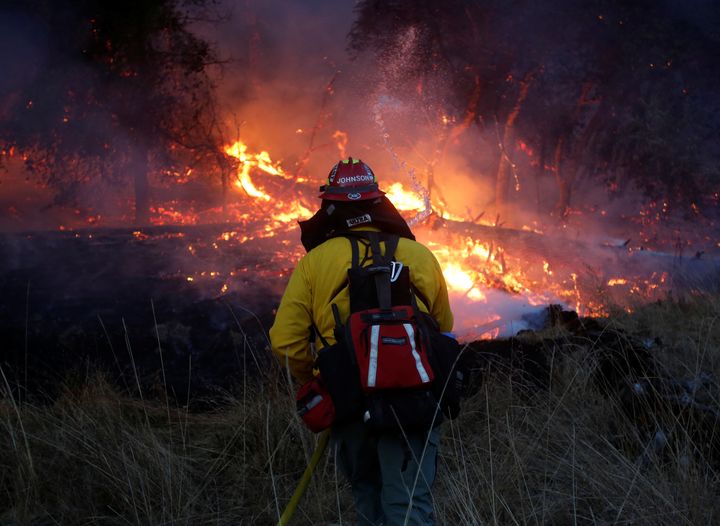Millions of people living in dozens of UK cities are inhaling air the World Health Organisation (WHO) considers too dangerous to breathe, a report has revealed.
Out of 51 UK cities and towns listed in an air quality database, 44 fail the WHO’s test for fine sooty particles smaller than 2.5 microns - known as PM2.5s - that have been linked to heart disease and premature death.
Exposure to the particles should not exceed 10 micrograms per cubic metre of air, according to the WHO.
But in dozens of British centres, levels are considerably higher, a report published by the Royal College of Physicians (RCP) has claimed.
Glasgow and Scunthorpe topped the list with a reading of 16 micrograms per cubic metre - 60% above acceptable levels - and London and Leeds weren’t far behind on 15. Eastbourne and the port city of Southampton equalled the capital’s exposure levels.

Cardiff and Birmingham had a PM2.5s concentration of 14, and Manchester 13.
In 2016, along with the Royal College of Paediatrics and Child Health (RCPCH), the RCP estimated that ambient air pollution causes approximately 40,000 premature deaths, over 6 million sick days and an estimated total social cost of £22.6 billion per year.
The latest report also found that 802 London schools and a high proportion of the capital’s hospitals and clinics were located in highly polluted areas “potentially putting some of society’s most vulnerable at risk”.
Dr Toby Hillman, one of the report’s authors from the RCP, said: “There isn’t a safe limit for the amount of pollution that’s been defined as yet and we know the effects of poor air quality run from cradle to grave; it’s a lifetime threat to human health.
“This is a really direct and tangible impact on UK health from the drivers of climate change, and taking action on air quality should be a priority.”

Diesel-powered vehicles, which generate pollution particles, were one of the “key drivers” of poor air quality, Dr Hillman said, adding: “Unfortunately previous policies about encouraging diesel adoption have led to an increase in the amount of diesel related pollution.”
In a “briefing for UK policymakers” the report called for the expansion of Clean Air Zones nationwide and wider introduction of measures similar to London’s new T-charge, which imposes a levy on drivers of the most polluting vehicles.
Hillman added: “We know that high exposures in early life have a major effect on lung and cognitive development throughout an individual’s life – that is why it is the government’s duty to improve the air we breathe and to ensure that people across the UK are not exposed to such a preventable cause of death and illness.

“Addressing climate change and poor air quality isn’t a burden or cost, but fundamentally an opportunity we should grasp with both hands.”
The impact of air pollution in UK cities forms part of a major investigation looking at the health and social costs of climate change around the world led by leading medical journal, The Lancet.
The Lancet Countdown on Health and Climate Change brought together 24 institutions and inter-governmental organisations including the WHO and World Meteorological Organisation.
It found that global exposure to dangerous levels of air pollution caused by burning fossil fuels had increased by 11.2 percent since 1990 with more than 70 percent of cities exceeding WHO pollution limits.
The report also pointed out that between 2000 and 2016 there had been a 46 percent increase in the number of global weather-related disasters and during the same period 125 million vulnerable adults over the age of 65 had been exposed to heatwaves.
Professor Hugh Montgomery, co-chair of The Lancet Countdown and director of the Institute for Human Health and Performance at University College London, said: “We are only just beginning to feel the impacts of climate change.
“Any small amount of resilience we may take for granted today will be stretched to breaking point sooner than we may imagine.”
The worst places in the UK for air quality:
Glasgow - 16
Scunthorpe - 16
Eastbourne - 15
Leeds - 15
London - 15
Salford - 15
Southampton - 15
Armagh - 14
Birmingham - 14
Cardiff - 14
Chepstow - 14
Gibraltar - 14
Oxford - 14
Port Talbot - 14
Portsmouth - 14
Stanford-le-Hope - 14
Stoke-on-Trent - 14
Thurrock - 14
Warrington - 14
Bristol - 13
Leamington Spa - 13
Manchester - 13
Newport - 13
Norwich - 13
Wigan - 13
Belfast - 12
Carlisle - 12
Hull - 12
Liverpool - 12
Nottingham - 12
Plymouth - 12
Prestonpans - 12
Swansea - 12
York - 12
Birkenhead - 11
Brighton - 11
Londonderry - 11
Middlesbrough - 11
Saltash - 11
Southend-on-Sea - 11
Chesterfield - 10
Newcastle upon Tyne - 10
Reading - 10
Stockton-on-Tees - 10
Wrexham - 10
Aberdeen - 9
Bournemouth - 9
Grangemouth - 9
Sunderland - 9
Edinburgh - 8
Inverness - 6
Forty-three of the cities and towns that failed the air pollution test are in the British Isles, with the 44th being Gibraltar.

